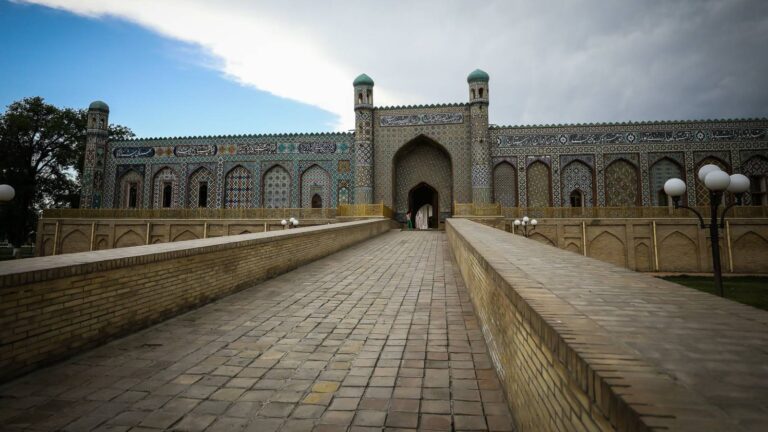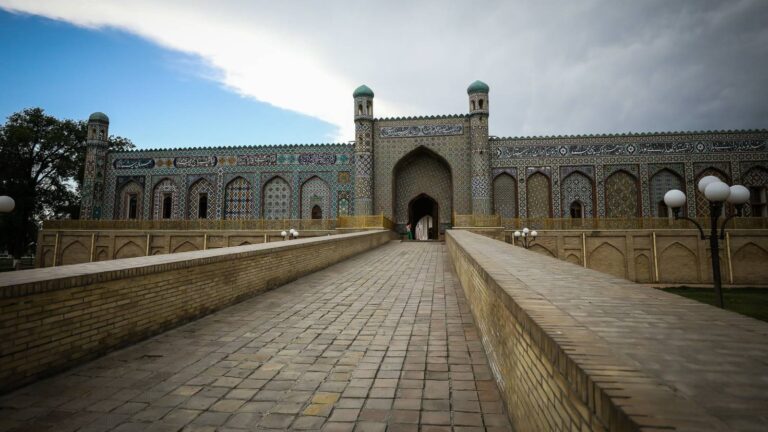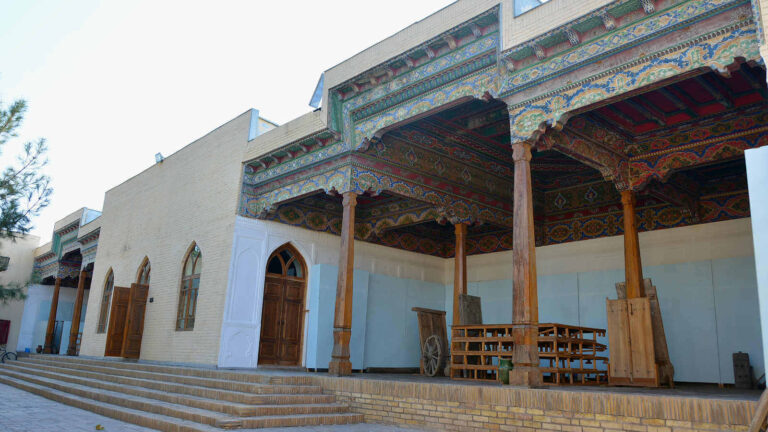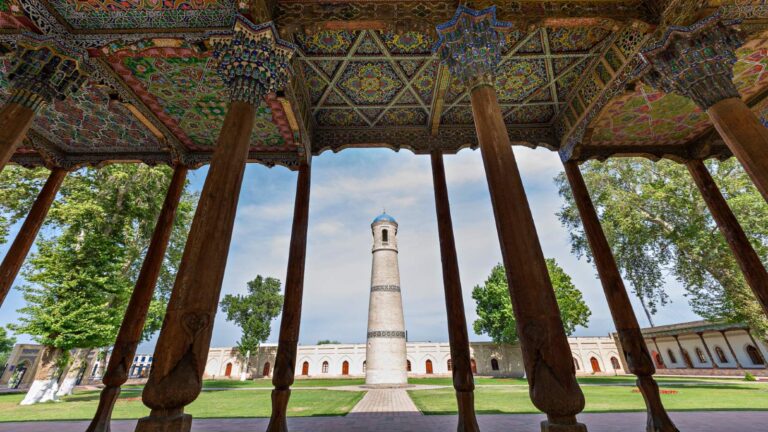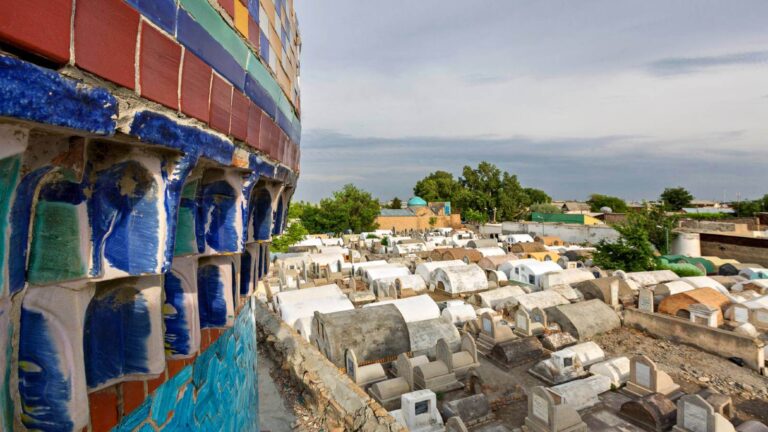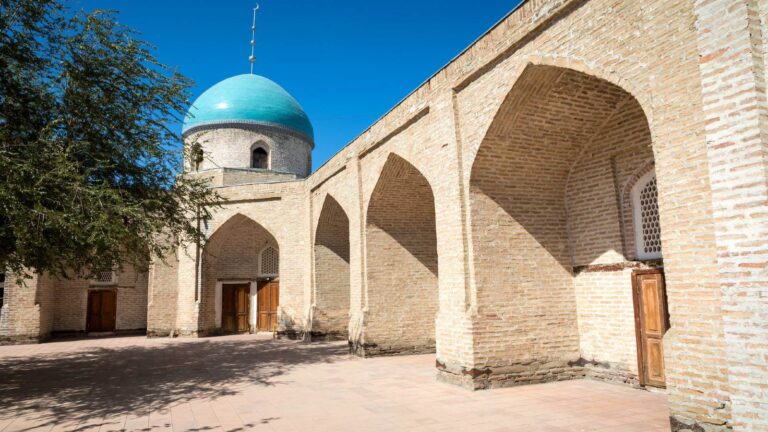Getting There
Take buses 14, 33, or 66. From Tashkent’s South Station, hop the daily train to Kokand (part of the Tashkent-Andijan route). Taxis like Premier, Arava, and Real shuttle visitors around the city.
What to Expect
Miyon Hazrat Madrasah is a compound three-yard complex: two courtyards are located along the east-west axis, the third adjoins them from the south. The main entrance to the madrasah – on the western side of the southern courtyard – is marked with a portal-domed darvozakhona with wooden gates decorated with carved ornaments by the local craftsman Iskander Khoja. Residential buildings are tightly adjacent to the madrasah from all sides.
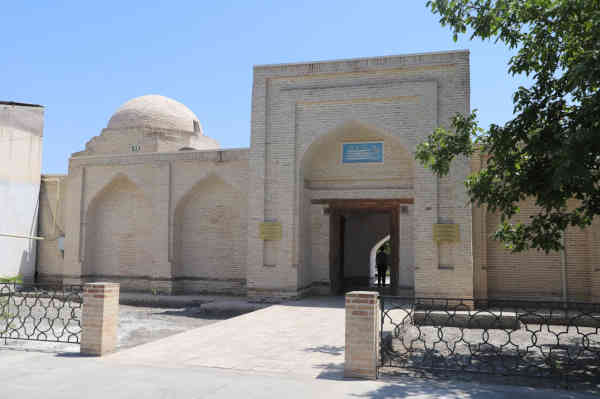
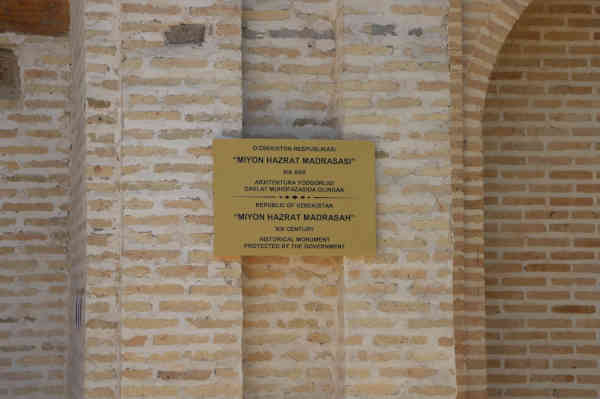
History
Along the southern courtyard perimeter (32 X 26 m), residential chambers were built, only in the southern part was a multi-column square mosque in plan with a flat beamed ceiling. Here in the southeast corner, a small minaret has been preserved.
The rest of the courtyards – the eastern (35X20 m) and western (23X11 m) – also surround the khujras. In the eastern part of the madrasah, an aivan was erected (now lost), and in the western part, a study room was built. Here you can observe various structural types of floors: vaults, domes and flat beams.
The facades of the madrasah with exposed baked brickwork are decorated with a rhythmic row of lancet shallow niches. The interiors are plastered with ganch.

